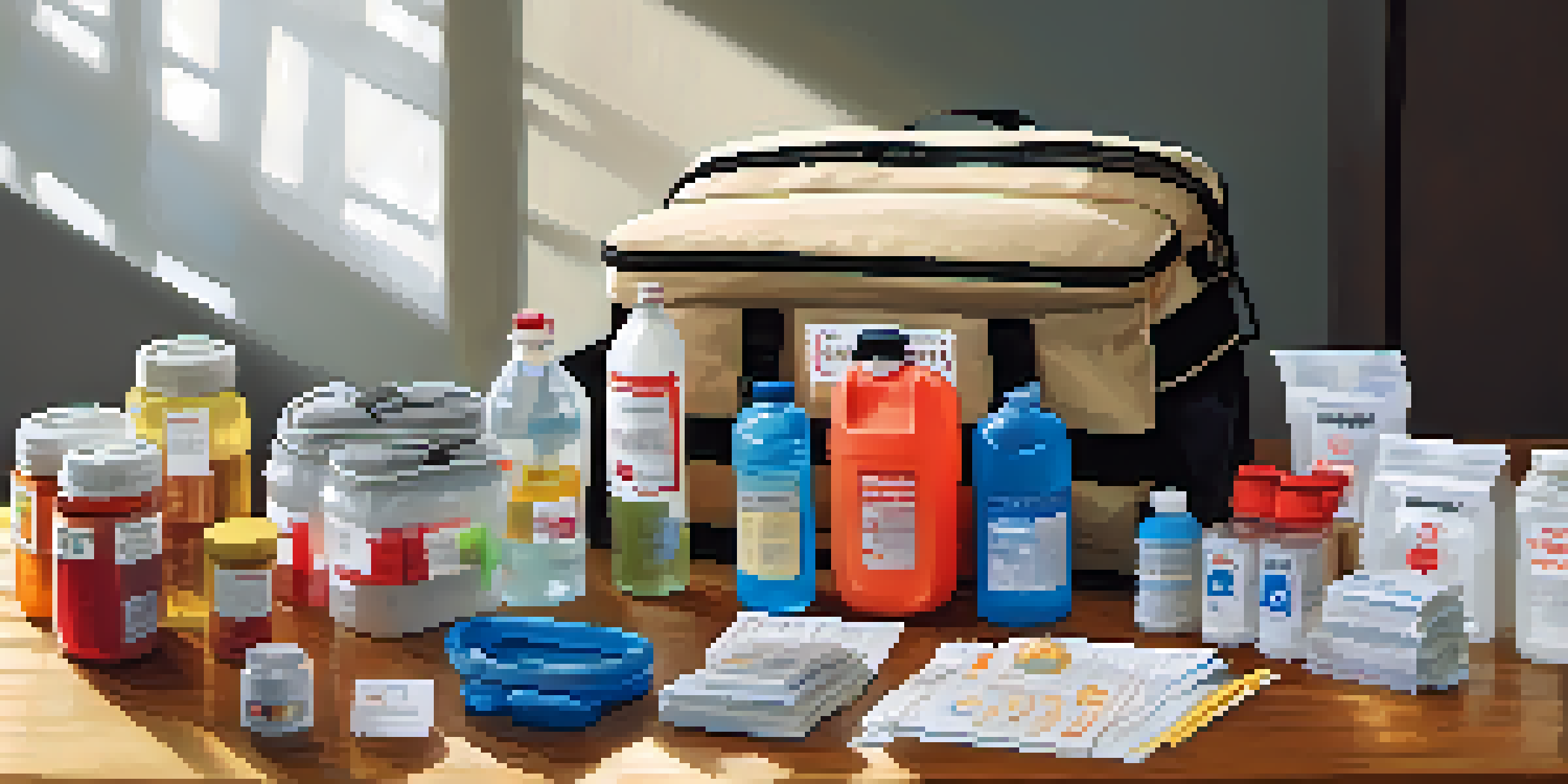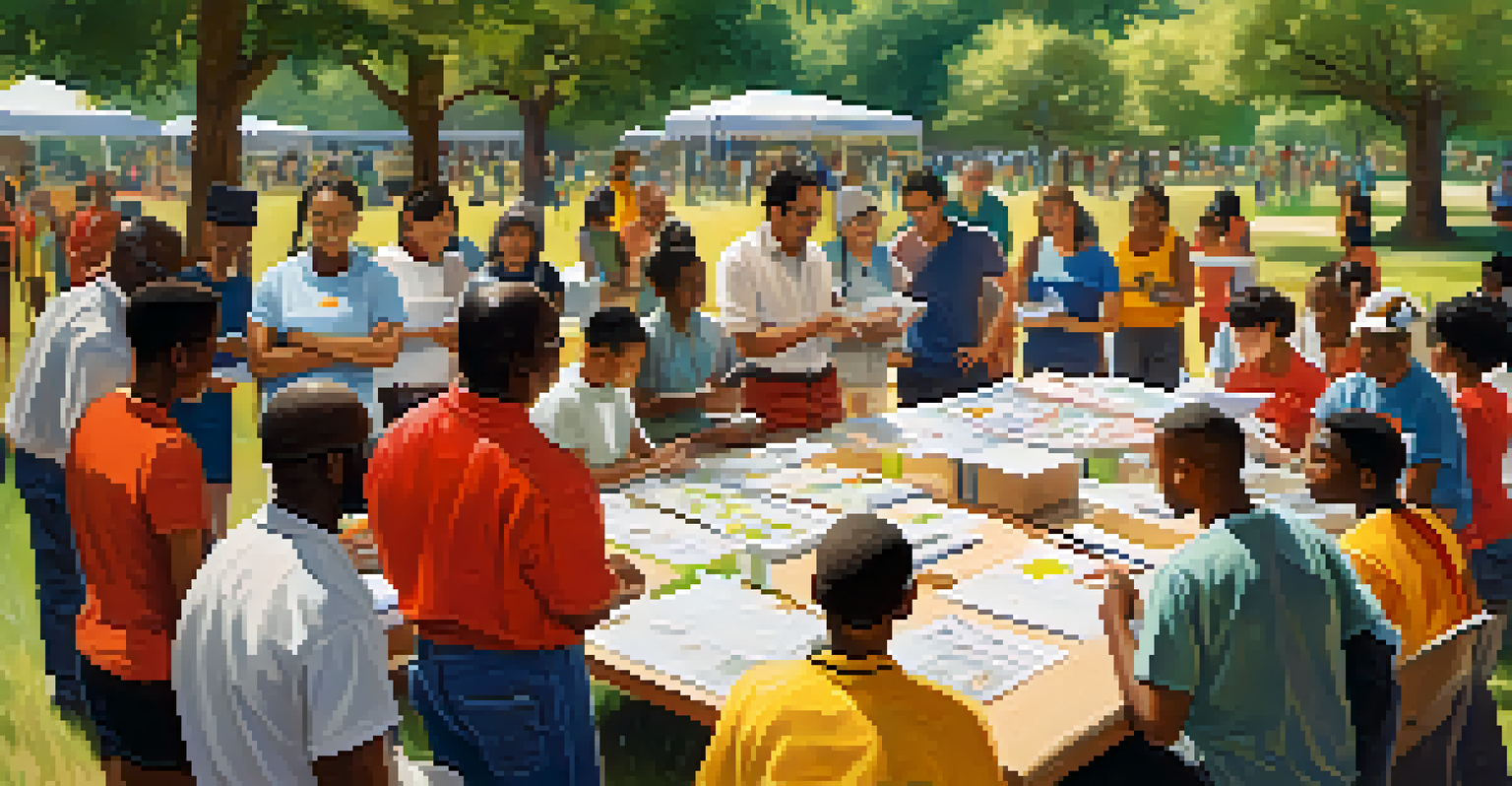Government Resources for Disaster Readiness Initiatives

Understanding Disaster Readiness: A Key to Safety
Disaster readiness is crucial for minimizing the impact of emergencies such as floods, hurricanes, or wildfires. It involves planning, training, and resource allocation to ensure communities can respond effectively. Government agencies play a vital role in providing guidelines and support for these initiatives, making it easier for citizens to engage in preparedness efforts.
By failing to prepare, you are preparing to fail.
One of the first steps in disaster readiness is understanding the specific risks your area faces. By identifying potential hazards, government resources can help communities tailor their preparedness plans. This localized approach ensures that the strategies implemented are relevant and effective, ultimately saving lives and property.
Moreover, disaster readiness is not just about response; it also includes recovery and mitigation strategies. Government resources offer comprehensive frameworks that guide individuals and communities from preparedness through to recovery, ensuring a holistic approach to safety.
Key Government Agencies and Their Roles
Several key government agencies are integral to disaster readiness initiatives, including the Federal Emergency Management Agency (FEMA) and the National Oceanic and Atmospheric Administration (NOAA). FEMA coordinates federal disaster response efforts and provides resources for community preparedness. Their website is a treasure trove of information, from planning guides to training materials.

NOAA, on the other hand, plays a critical role in monitoring and forecasting weather-related disasters. They provide timely warnings that help individuals and communities prepare in advance. By utilizing their tools, citizens can stay informed about potential threats and take proactive steps to safeguard their homes and families.
Disaster Readiness Saves Lives
Understanding local risks and having a preparedness plan is essential for minimizing the impact of emergencies.
Additionally, local emergency management offices are essential players in disaster readiness. They tailor federal guidelines to fit local needs and often provide direct support and resources to residents. Engaging with these agencies creates a robust support system for anyone looking to enhance their disaster preparedness.
Online Resources for Individuals and Families
In today's digital age, online resources are invaluable for disaster readiness. Government websites offer a plethora of materials designed to help individuals and families prepare for emergencies. From creating emergency kits to developing communication plans, these resources are user-friendly and accessible.
The time to repair the roof is when the sun is shining.
For example, Ready.gov is a popular platform that provides step-by-step guides on how to prepare for various disasters. The site emphasizes the importance of having a family emergency plan, which can be lifesaving during a crisis. It also includes interactive tools that make the preparation process engaging and straightforward.
Moreover, many state and local agencies have online portals featuring localized resources and information. These platforms can help families understand what specific steps they need to take based on their unique circumstances, enhancing overall community resilience.
Community Engagement and Local Initiatives
Community engagement is vital for effective disaster readiness, and government resources often facilitate local initiatives. Many agencies support community training sessions, workshops, and drills to foster preparedness at the grassroots level. These initiatives create a culture of readiness, empowering residents to take ownership of their safety.
Local organizations often partner with government agencies to spread awareness and provide training. For instance, community centers might host preparedness fairs that offer resources, demonstrations, and networking opportunities. Engaging in these activities not only enhances individual knowledge but also strengthens community bonds.
Engagement Boosts Community Safety
Active community involvement and training initiatives enhance disaster readiness and resilience at the grassroots level.
Additionally, local governments may offer grants or funding for community-led disaster preparedness projects. This financial support encourages grassroots efforts, allowing communities to tailor their initiatives based on specific needs and available resources.
Training Programs for Volunteers and First Responders
Training programs offered by government agencies are essential for equipping volunteers and first responders with the skills they need during a disaster. Organizations like FEMA provide extensive training courses that cover everything from basic first aid to advanced incident management. These programs ensure that individuals are prepared to assist effectively in emergencies.
Volunteering for disaster response can be incredibly rewarding, and government resources make it easy to get involved. Many agencies offer certification programs that not only enhance skills but also provide networking opportunities within the field. This is particularly beneficial for those looking to build careers in emergency management.
Moreover, training programs often emphasize the importance of teamwork and communication during crises. By fostering these skills, volunteers and first responders can work together seamlessly, ensuring a coordinated response that maximizes safety and efficiency.
The Importance of Emergency Kits and Supplies
One crucial aspect of disaster readiness is the preparation of emergency kits and supplies. Government resources provide guidelines on what items should be included in these kits, such as food, water, first-aid supplies, and important documents. Having these essentials on hand can make a significant difference in the event of a disaster.
Creating an emergency kit is a straightforward process, but it requires planning. Government websites often offer checklists to help families gather necessary items and ensure nothing is overlooked. Additionally, these resources remind individuals to periodically check and refresh their supplies, keeping them ready for any situation.
Emergency Kits Are Essential
Preparing emergency kits with necessary supplies can significantly improve safety and response during a disaster.
It's also important to tailor your emergency kit to your family’s unique needs. Government resources encourage individuals to consider factors such as dietary restrictions, medical needs, and the size of their household when assembling supplies, ensuring everyone is adequately prepared.
Staying Informed: Alerts and Communication Systems
Staying informed during a disaster is paramount, and government resources play a key role in communication. Many agencies utilize alert systems to keep the public updated on emergencies, such as weather warnings or evacuation orders. Signing up for these alerts can provide crucial information that helps individuals make timely decisions.
In addition to alerts, government resources often highlight the importance of having multiple communication methods. This could include landlines, mobile phones, and even social media platforms to ensure you receive information from various sources. Diversifying your communication channels increases the likelihood of staying informed during a crisis.

Lastly, government initiatives encourage families to establish communication plans. This means designating meeting points and establishing contact methods to ensure everyone stays connected during emergencies. These plans are essential for reducing panic and ensuring that loved ones can find each other when it matters most.